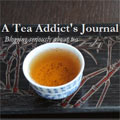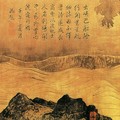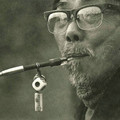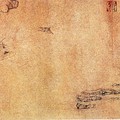Brewing Method for Phoenix Dan Cong Oolong in Chaozhou Style
„“

Video Tags: Oolong, Tea infusion
- Discussion: 0 comments
- Write a comment
Teas - Oolong
2012 Autumn Fujian Anxi Benshan 100g
 2 reviews
2 reviewsOne of famous oolong teas from Anxi is Benshan. This is a light roasted with low...
2014 Zheng Yan Tieluohan Oolong Tea
 0 reviews
0 reviewsThis Zheng Yan tea from Cindy Chen was baked 4 times over charcoal to achieve a medium...
2013 Čang-pching Šuej-sien „Black perl“
 0 reviews
0 reviewsVelice zajímavý a kvalitní lisovaný čaj z málo známé oblasti Čang-pching. Tento oolong...
2012 Spring Slight Charcoal Roasted
 0 reviews
0 reviews"Shui Xian" (also spelled Shui Hsien) - narcissus or water sprite This great...
Quotes - Oolong
„I found my early blogging efforts, basically writing down my impressions of the tea I drank every day, to be a worthwhile exercise – it helps me process what I’ve had and what I thought, and once in a while I go back to my own ideas back then and realize how I have developed as a drinker, as well as how a tea may have changed over time. Many of my earlier perceptions are flawed, if not outright wrong, or at least have been modified over time by my experiences since then. Writing about it constantly here helps me work through those thoughts.“

Quotes Tags: Experiencing tea, Pu-erh, Oolong
Video - Oolong
Teas
2014 Yunnan Simao Huoqing Green Tea
 1 review
1 reviewSpring comes to Yunnan earlier this year. And also spring teas from regular spring harvest are picked a...
2006 Bailong TF Jinggu "Da Bai Hao" 357g
 1 review
1 reviewJinggu area, it's famous for one of varietal tea trees – Da Bai Hao – “Big White tomentum”. The tea leaves...
Xiaguan Tuocha 2007
 1 review
1 reviewJia Ji (甲级) - "A-Grade" Tea was stored in mountain district of Taiwan. I was...
Theme
Tea by region
We will help you with tea selection.
Do you like quality loose tea?
We will help you to find the right one for you. Be inspired by tea ratings of other tea lovers. Rating stars could help you.


Review your cup of tea.
Review the tea you are drinking and help other tea lovers to find the right cup of tea.



Quotes
„tai di; 台地 - Literally mesa or plateau.台地茶 tai di cha refers to tea bushes that have been planted and are still young. They are also the broad leaf varietal and have generally been grown from the seeds of old trees. They are not inherently bad, but the use of chemicals in their cultivation is pervasive.“



 Shops
Shops Share on Facebook
Share on Facebook















